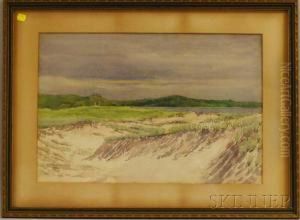Emily Noyes Vanderpoel Paintings
Emily Noyes Vanderpoel was an American artist, writer, and collector, whose contributions to art and color theory have continued to resonate well into the contemporary era. Born on September 17, 1842, in New York City, Vanderpoel grew up in a time when the opportunities for women in the arts were limited, yet she managed to carve a significant niche for herself in the art world. She was not only a skilled painter, primarily working in watercolors, but also a pioneering figure in the field of color theory. Her most notable work, 'Color Problems: A Practical Manual for the Lay Student of Color,' published in 1901, remains a seminal text in the field, offering insight into her innovative approach to understanding and teaching color dynamics.
Vanderpoel's education in art was comprehensive, studying at various institutions and under renowned artists of her time. She exhibited her work at numerous prestigious venues, including the National Academy of Design and the Paris Salon, showcasing her talent on both national and international stages. Her art often depicted scenes from her travels, landscapes, and still lifes, characterized by a delicate and nuanced use of color.
Beyond her work as an artist and author, Vanderpoel was deeply involved in her community in Norwalk, Connecticut, where she eventually settled. She was instrumental in founding and curating collections for the Norwalk Library, demonstrating her commitment to public service and education. Her efforts in this area highlighted her belief in the importance of accessible art and cultural knowledge for all.
Vanderpoel's legacy is not only preserved in her paintings and her groundbreaking book on color theory but also in her contributions to public collections and her influence on subsequent generations of artists and designers. Despite her death on November 27, 1939, her work continues to be studied and admired, signifying her lasting impact on the art world and beyond. Her life and career stand as a powerful testament to her innovative spirit, her dedication to the arts, and her pioneering role as a woman in the predominantly male-dominated fields of art and science at the turn of the 20th century.
